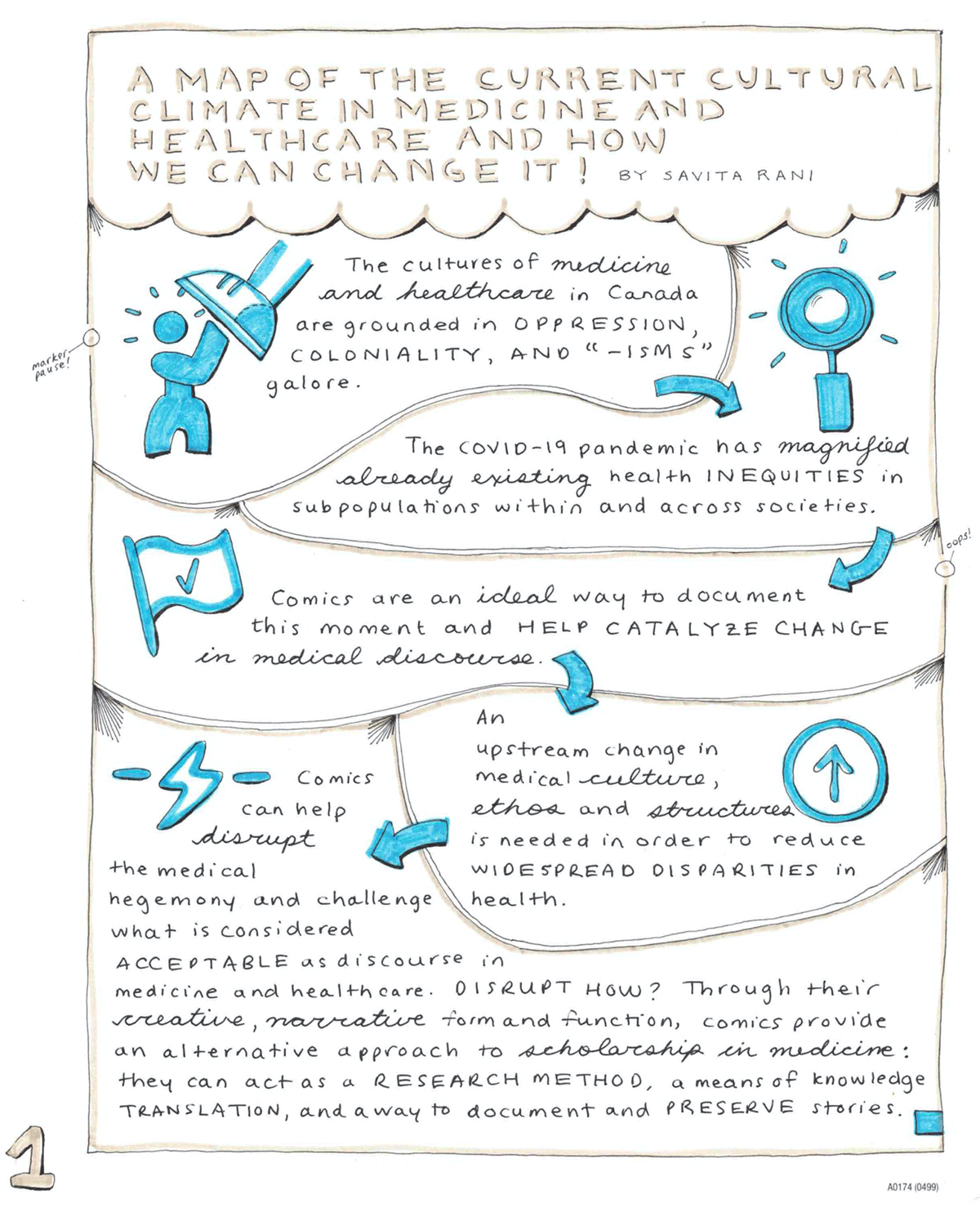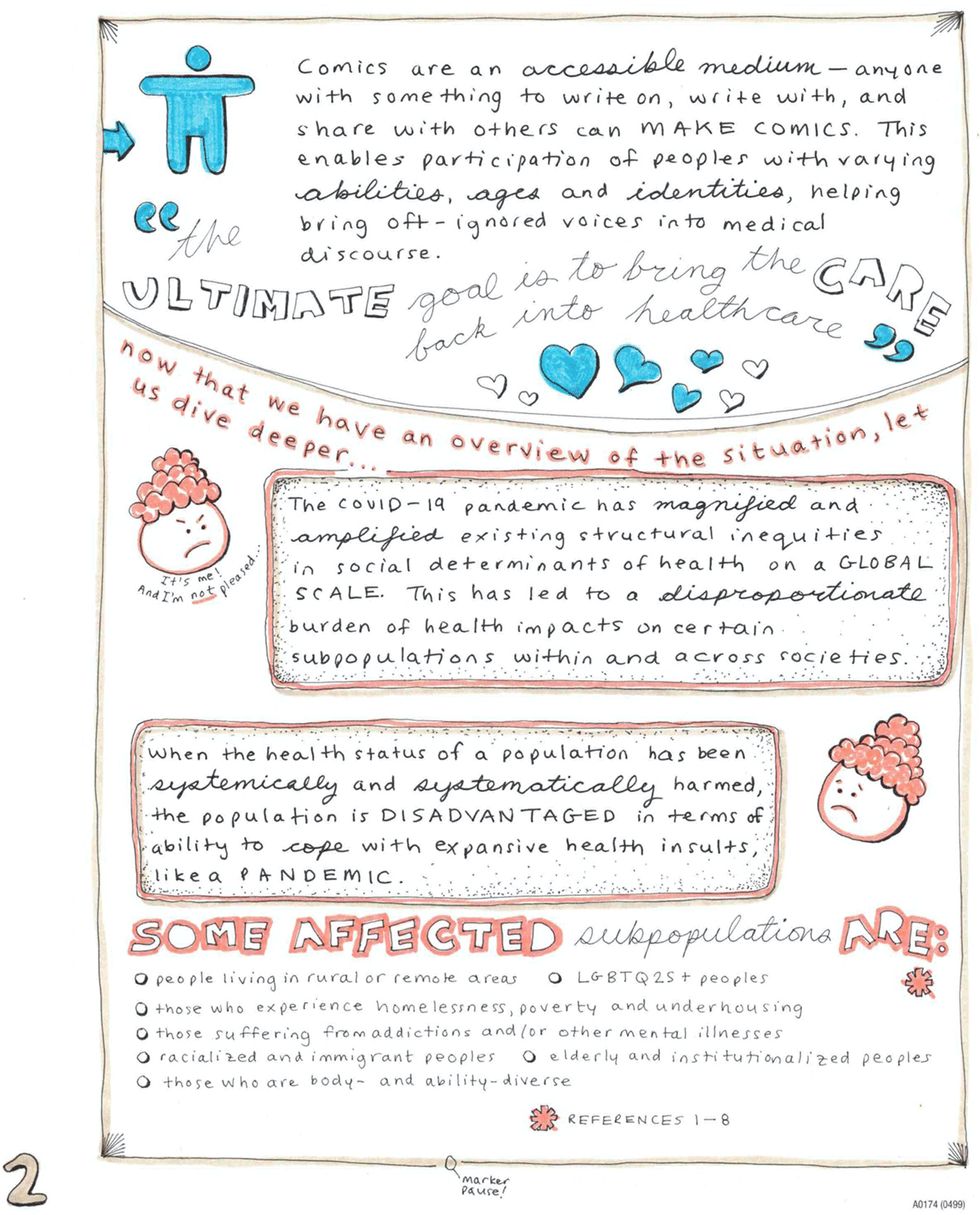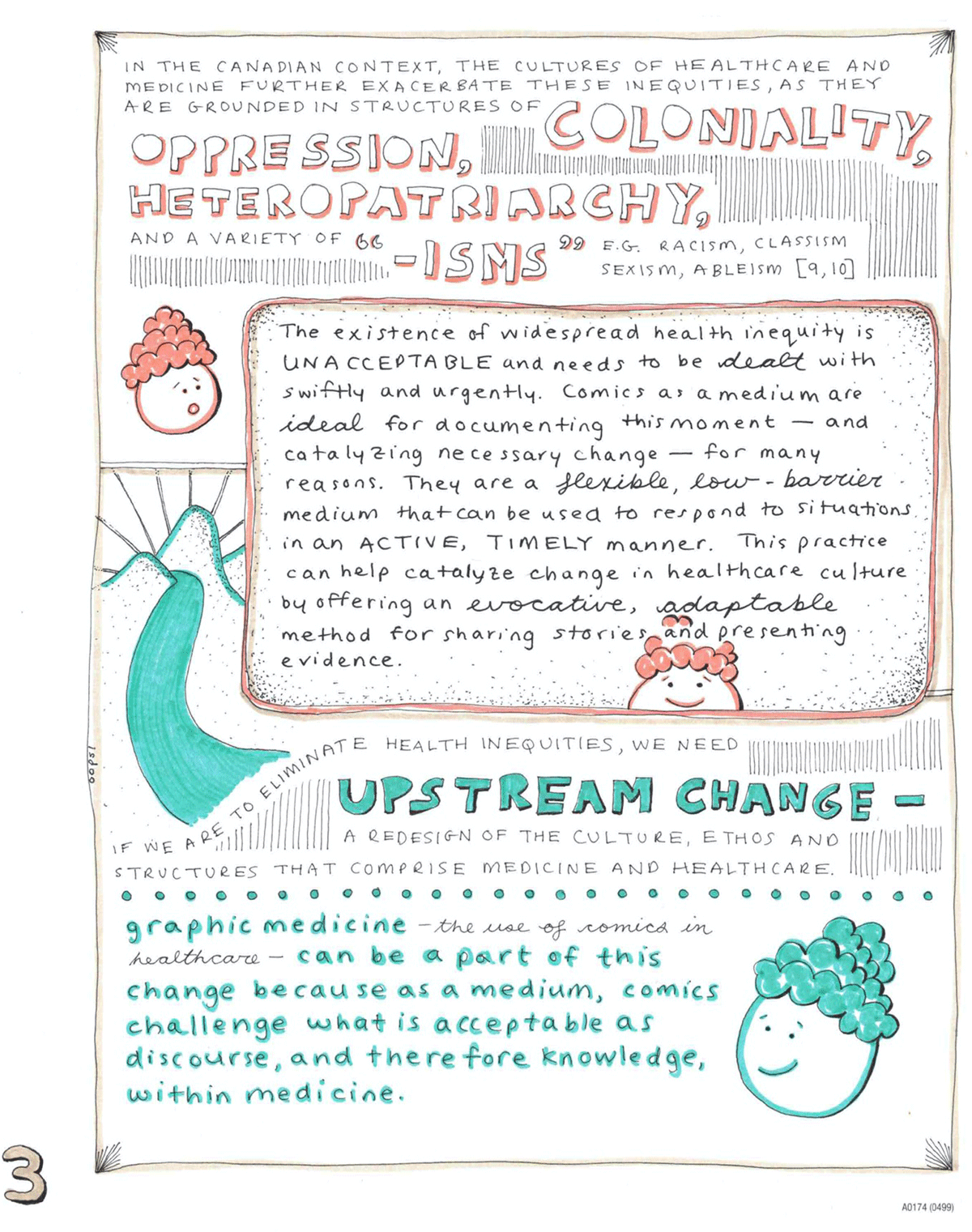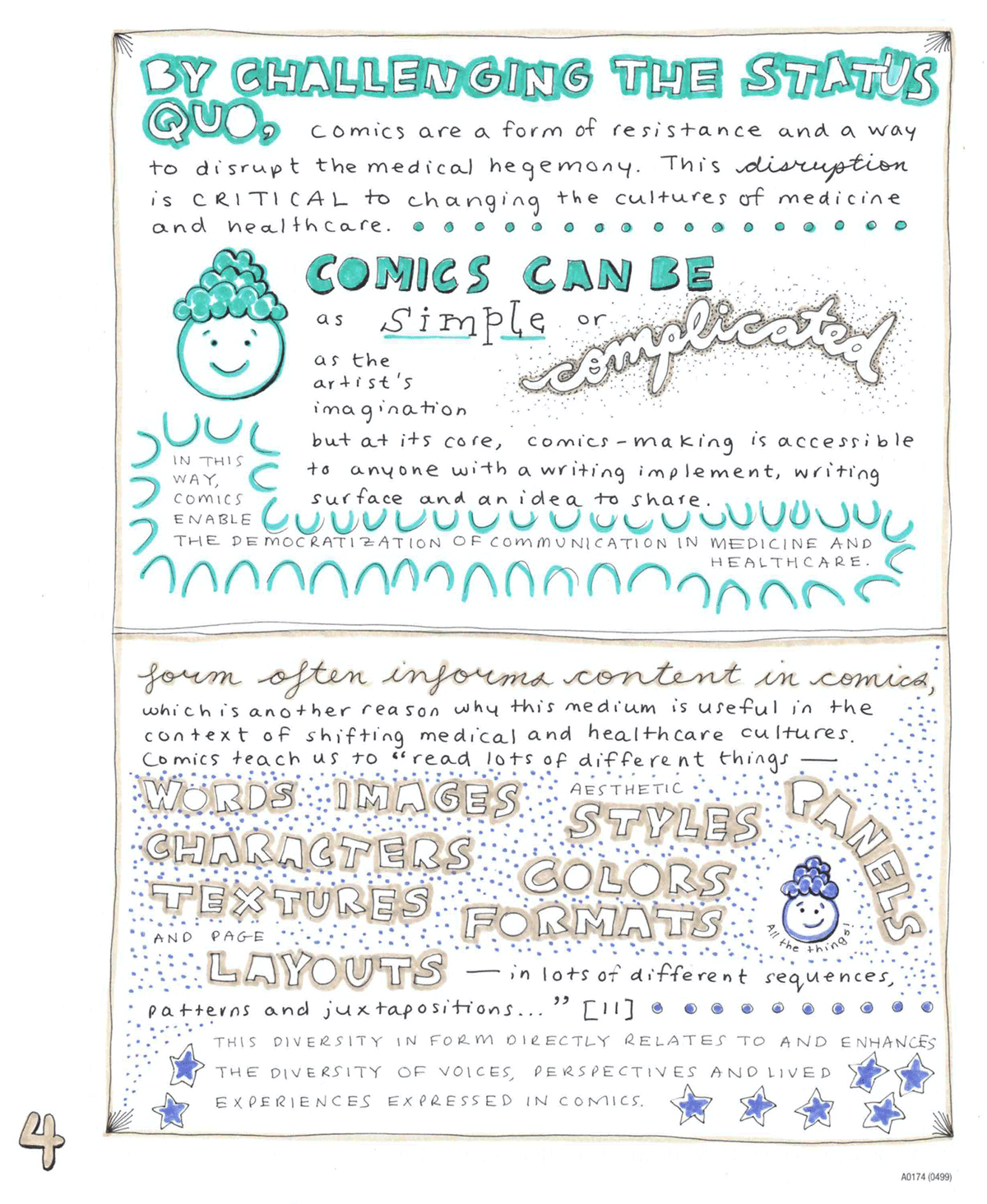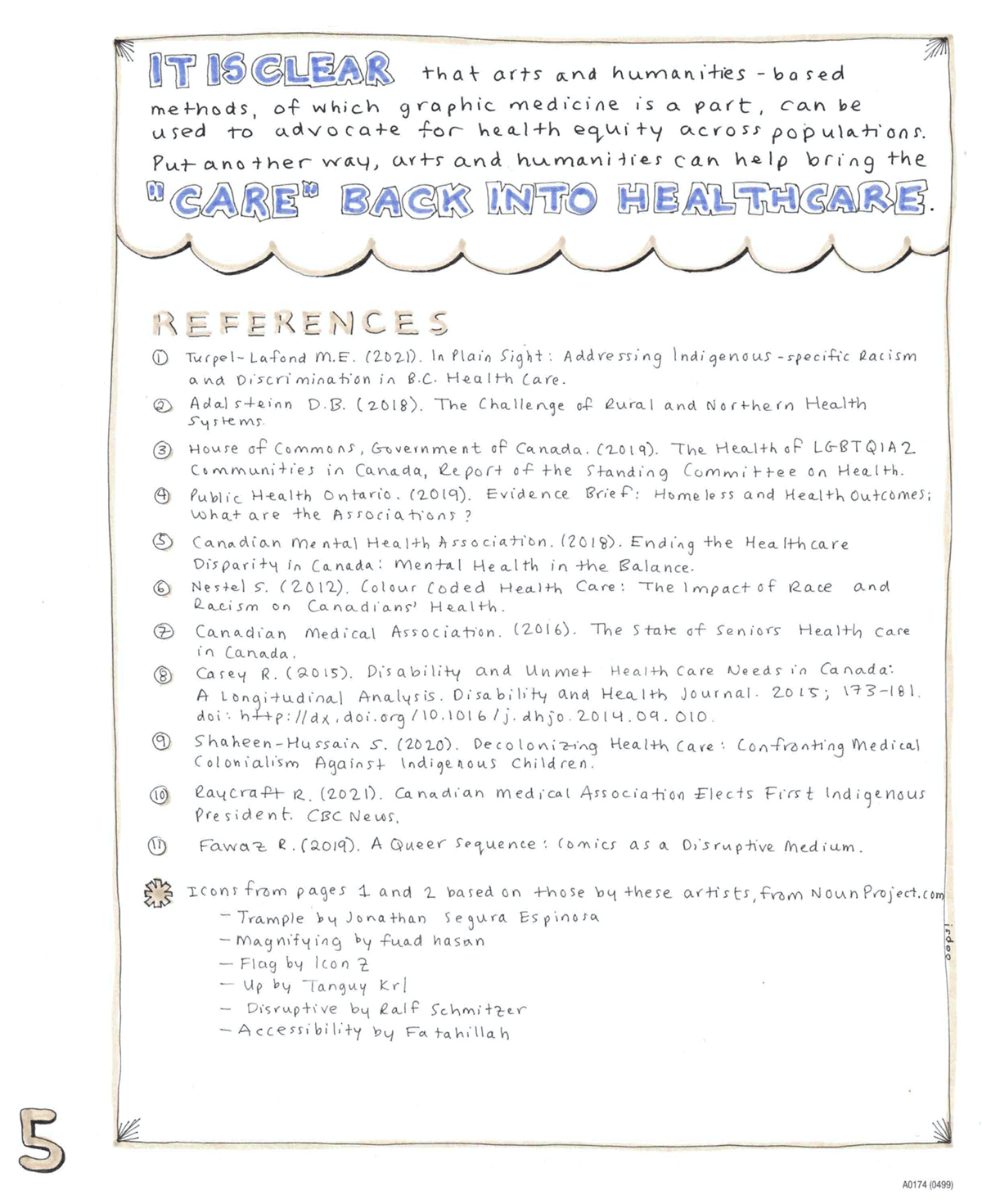Introduction
In Canada, healthcare and medicine are grounded in structures of coloniality, oppression, heteropatriarchy and a variety of “-isms” (racism, sexism, ableism, classism). Consequently, it is little wonder that deep-rooted, enduring health disparities exist for many different groups across Canada. The COVID-19 pandemic has only served to exacerbate these disparities. Clearly, something needs to change in healthcare delivery and education. Comics are an ideal medium to document this moment, as well as catalyze change, for many reasons. Graphic Medicine – the creation and study of comics in healthcare contexts – can be used to explore the current discourses and cultures of healthcare and bring diverse perspectives into dialogue. Comics are also inherently disruptive. They challenge what is considered acceptable as discourse, and therefore knowledge, within medicine. They are also accessible to anyone with a writing tool, surface, and an idea to share. In this way, comics help democratize communication and give oft-ignored voices the ability to help shape medical discourse. Additionally, the diversity of forms and features used in comics creation directly relates to and enhances the diversity of voices, perspectives and lived experiences expressed in comics. Graphic Medicine can be a tool to advocate for health equity across populations.
Conclusion
It is clear that arts and humanities-based methods, of which Graphic Medicine is a part, can be used to advocate for health equity across populations. Put another way, arts and humanities can help bring the “care” back into healthcare.
Icons from pages 1 and 2 based on those by these artists, from NounProject.com
Trample by Jonathan Segura Espinosa
Magnifying by fuad hasan
Flag by The Icon Z
Up by Tanguy Krl
Disruptive by Ralf Schmitzer
Accessibility by Fatahillah
Author’s Note
I have used a hand-drawn, “sketchy” aesthetic to produce my graphic submission. This was a deliberate choice. The act of putting pen to paper emphasizes the immediacy with which I am creating this comic and directly relates to the urgency with which the content needs to be examined. The hand-drawn aesthetic also lends a feeling of accessibility and approachability. It allows the reader to consider that they, too, could draw their own comic – opening the door for broad dialogue on the topic. Finally, hand drawn lines are intimate – there is something poignant about being able to trace over lines drawn by one human hand with your own. My hope is that this intimacy will help strengthen the connection readers have with my story.
Every effort has been made to trace copyright holders and to obtain their permission for the use of copyright material under educational fair use for the purpose and criticism and review and full attribution and copyright information has been provided in the captions.
Editors’ Note
This work is part of the Rapid Responses: Comics In and Of the Moment Special Collection, edited by Jeanette D’Arcy and Kay Sohini, with Ernesto Priego and Peter Wilkins.
Competing Interests
The author has no competing interests to declare.
References
Adalsteinn DB. (2018). The Challenge of Rural and Northern Health Systems. Retrieved April 28, 2021.
Canadian Medical Association. (2016). The State of Seniors Health Care in Canada. Retrieved April 28, 2021. DOI: http://doi.org/10.1002/mhw.31461
Canadian Mental Health Association. (2018). Ending the Healthcare Disparity in Canada: Mental Health in the Balance. Retrieved April 28, 2021.
Casey, R. (2015). Disability and unmet health care needs in Canada: A longitudinal analysis. Disability and Health Journal. 2015; 173–181. Retrieved April 28, 2021. DOI: http://doi.org/10.1016/j.dhjo.2014.09.010
Fawaz, R. (2019). A Queer Sequence: Comics as a Disruptive Medium. Retrieved June 14, 2021. DOI: http://doi.org/10.1632/pmla.2019.134.3.588
House of Commons, Government of Canada. (2019). The Health of LGBTQIA2 Communities in Canada, Report of the Standing Committee on Health. Retrieved April 28, 2021.
Nestel, S. (2012). Colour Coded Health Care: The Impact of Race and Racism on Canadians’ Health. Retrieved April 28, 2021.
Public Health Ontario. (2019). Evidence Brief: Homeless and Health Outcomes: What are the Associations? Retrieved April 28, 2021.
Raycraft, R. (2021). Canadian Medical Association elects first Indigenous president. CBC News. Retrieved April 28, 2021.
Shaheen-Hussain, S. (2020). Decolonizing Health Care: Confronting Medical Colonialism against Indigenous Children. Retrieved April 28, 2021.
Turpel-Lafond ME. (2021). In Plain Sight: Addressing Indigenous-specific Racism and Discrimination in B.C. Health Care. Retrieved April 28, 2021.
